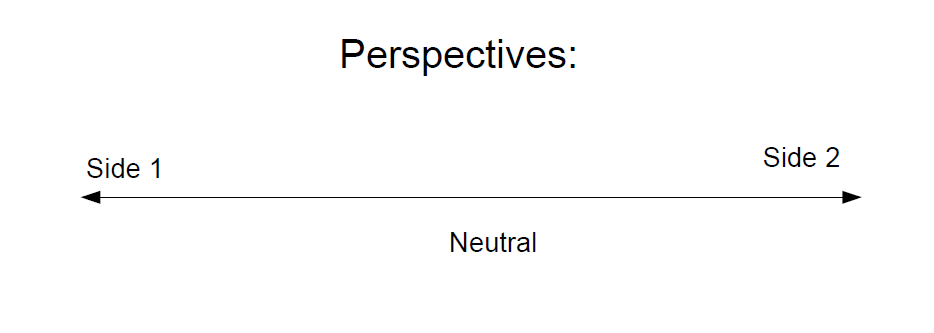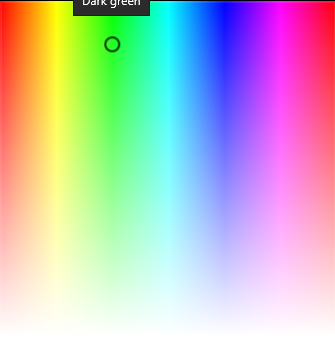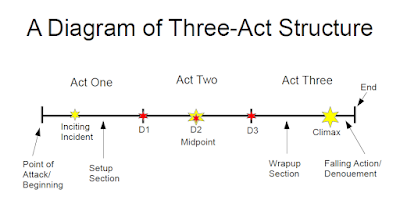A Matter of Perspective
In my English 2010 class this semester, my professor has been talking a bit about perspectives, and about how, when writing any sort of research paper, it's really important to look at as many perspectives as you can and try to understand them. Whether they support your position or not, it's always good to see an issue from as many sides as possible so as to get an understanding with the proper depth.
And then, of course, he drew a little diagram to illustrate his point. Here's the basic gist:
Ta-da! Two sides of an issue, and everybody falls somewhere along the scale. Seems reasonable, right? In politics, we get a lot of these two-sided discussions: pro-life vs. pro-choice, gun control vs. gun rights, Trump vs. Biden, open immigration borders or a semi-permeable boundary of separation.
But wait! What about the issues where there's more than two perspectives?
For a less political example, book genres. I've chatted with a bunch of my co-workers who enjoy reading and writing, and we all have very different tastes in books. One of my co-workers absolutely adores Jane Austen. Another, like me, enjoys reading books from Brandon Sanderson. A third prefers to read historical fiction. There are so many genres out there, and plenty of people who read them and will stand up for their preferred genre to the very end. Some folks like horror, some folks like romance, some people like science fiction or fantasy. I'm a person who loves fantasy but can't stand science fiction--though often classed together, my perspective is that they are at best distantly related.
How do you depict that set of perspectives? The sliding scale up above doesn't cover all those viewpoints!
This is why I think that perspectives are much more like the color wheel, or those drag-to-select color boxes on programs like Adobe Illustrator or Photoshop:
Look at all those colors on there! If each shade and hue represents a perspective, there's more than enough room for everybody's opinions. My perspective might be somewhere in the dark red scale, and yours might be in the middling green, and one of our friends might think something in the lightest blue, to the point where it's almost white. None of these perspectives are wrong--and, best of all, none of them are opposite! We might think of different colors as opposites, but that's not really how it works, not even on the color wheel. There are complementary colors (and on the color wheel, those are as close to opposites as you can get), and there are colors that don't look the best together, but I don't think there are any colors that are really opposite of each other. I can't say I've ever seen two colors cancel each other out.
Colors mix and blend and become new colors. They don't fight each other, they add to each other. That, I think, is what my English professor is trying to achieve with his diagram--he just has a slightly incomplete one. :)
Now, because this is primarily a writing blog, how does this apply to the art of story? I have some thoughts to share, but in the interest of keeping this blog post short and sweet, I want to know what all of you think first. (You know, the whole... 2 people who actually read this blog, alongside the many, many scrolling bots from Singapore. Yup, you guys.) So, if you're here, and you read my posts, and you're an actual human being instead of a computer, I invite you to take a few minutes to think about that question and post your response in the comments, and then look out over the next week or two for a follow-up post.



Hey there :) to be honest I don't really have anything to contribute to the conversation, but I'd just like to say that I'm here, I enjoy reading your blog, and I am not a bot from Singapore.
ReplyDeleteThank you! It's nice to know my words are reaching someone! :)
Delete